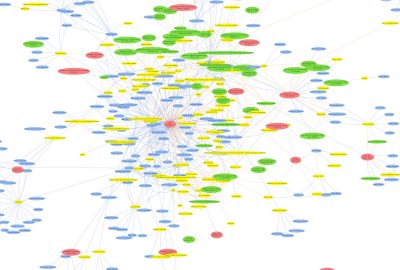“CAVE Art History Database – the Network” by Pape and Georger
Conference:
Experience Type(s):
Title:
- CAVE Art History Database - the Network
Program Title:
- 50 Years at a Glance
Presenter(s):
Description:
The CAVE Art History Database seeks to document the history of public art and entertainment projects that used CAVE (and CAVE-like) virtual reality systems, from 1992 through the present. The database includes records of projects, artists, organizations, shows, and publications (papers, news articles, websites, Youtube videos, etc). This poster presents a visualization of the connections between people, projects, and institutions currently in the database.
Early VR development centered around the technology of head-mounted displays. The CAVE, first exhibited at SIGGRAPH 92, represented an alternative to this paradigm – a spatially immersive display of 3D projection screens forming a small room that viewers entered – and eventually became widespread in academic and industrial labs. More recently, mass-market consumer VR has returned to the HMD approach, and the CAVE’s history is relatively unknown outside academic research.
Whereas most early VR work was driven by scientific and engineering applications, the CAVE became a medium for many digital artists as well. This continued beyond its home in Chicago, to places such as the Ars Electronic Center, NTT InterCommunication Center, and various universities. Artists who experimented with the CAVE include Jeffrey Shaw, Maurice Benayoun, Robert Coover, Jackie Matisse, and many others. The works that this project focuses on range from pure games to high-budget museum commissions. With the march of time and ever-changing technical standards, the works themselves are generally no longer functional, but the insights gained in making them can still be applicable to new generations of creators exploring immersive VR.
Additional Images:
- 2023 History: Pape_CAVE Art History Database ? the Network






